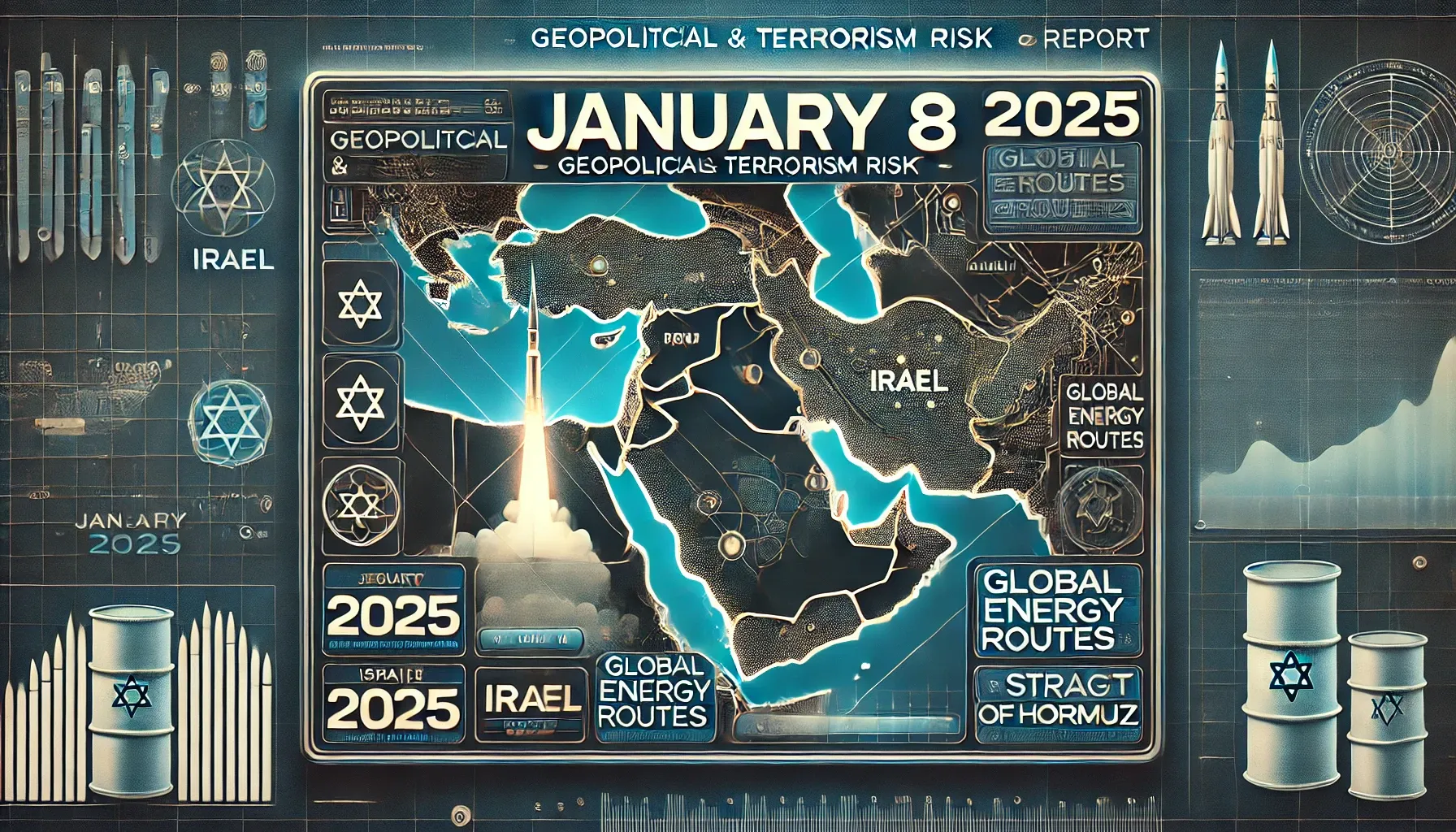Executive Summary
On January 8, 2025, heightened tensions surround Iran following cryptic statements from Iranian state media, warning of “unusual scenes and extraordinary events.” This announcement, combined with ongoing geopolitical instability and significant historical anniversaries such as the downing of Flight 752, raises global security concerns. This report analyzes potential scenarios, key risks, and actionable measures to mitigate threats.
1. Breaking News and Analysis
- Iran’s Cryptic Announcement:
- Early this morning, Iranian state media declared that “the world will witness unusual scenes and extraordinary events in the coming hours.”
- Possible Scenarios:
- Military Escalation: A high-profile military operation targeting Israel or Western assets.
- Show of Force: Testing or unveiling advanced missile, drone, or nuclear technology.
- Cyberattack: Coordinated disruptions targeting critical infrastructure in the U.S., Europe, or Israel.
- Symbolic Retaliation: Actions tied to the anniversary of Flight 752 to project strength and defiance.
- Implications:
- The statement signals heightened readiness by Iranian military and proxy forces, potentially affecting global markets, regional security, and diplomatic engagements.
2. Historical Significance and Symbolism
- Downing of Flight 752 (2020):
- The anniversary of this tragedy remains a somber reminder of Iran’s missteps and their international ramifications.
- Events commemorating victims in Canada, Ukraine, and beyond may face disruptions or targeted propaganda from pro-Iran factions.
3. Recent Events Shaping Risks
Iran’s Strategic Adjustments:
- Withdrawal from Syria:
- Iran has significantly reduced its military footprint in Syria following the collapse of the Assad regime. This setback may prompt Tehran to reassert its influence in the region through other means, including covert operations.
Regional Dynamics:
- Israeli Preparations:
- Israel has expressed confidence in countering potential Iranian actions, including nuclear development. However, a preemptive Israeli strike remains a wildcard.
Domestic Repression in Iran:
- Reports of increased executions within Iran highlight the regime’s internal fragility and its reliance on fear to maintain control.
4. Predictive Analysis
Potential Targets
- Israeli and U.S. Interests:
- Embassies, consulates, and military bases in the Middle East and globally.
- Rationale: Likely targets of symbolic or retaliatory attacks.
- Global Energy Infrastructure:
- Locations: Oil tankers in the Strait of Hormuz, pipelines in Saudi Arabia.
- Rationale: Disruptions would pressure global markets and signal Iranian power.
- Cyber Operations:
- Likely targets: Financial systems, critical infrastructure in Western nations.
- Rationale: Iran has a history of leveraging cyberattacks to exert asymmetrical influence.
Likely Attack Types
- Missile and Drone Strikes:
- Targets: Key military or energy infrastructure in the Middle East.
- Details: Precision strikes designed for maximum psychological impact.
- Coordinated Cyberattacks:
- Targets: Financial, energy, or governmental systems in the U.S. or Europe.
- Details: Disruptive actions timed with Iran’s announcement to amplify global unrest.
- Proxy Militia Attacks:
- Targets: Israeli or Saudi interests in the Middle East.
- Details: Iranian-backed groups such as Hezbollah or the Houthis could act as intermediaries.
High-Risk Regions
- Middle East:
- Key areas: Israel, Gulf Cooperation Council (GCC) countries, and Iraq.
- Risks: Escalated proxy warfare and potential direct Iranian operations.
- Global Capitals:
- Key cities: Washington, London, and Paris.
- Risks: Possible protests or cyber disruptions tied to Iranian actions.
- Strait of Hormuz:
- Risks: Energy chokepoint remains vulnerable to maritime disruptions.
5. Implications for Stakeholders
Businesses
- Energy Sector:
- Prepare for potential disruptions in oil and gas markets due to instability in the Gulf.
- Cybersecurity:
- Heighten defenses against potential Iranian-sponsored cyberattacks targeting critical industries.
Government Agencies
- Surveillance:
- Closely monitor Iranian communications and proxy activities for signs of imminent action.
- Diplomatic Coordination:
- Strengthen alliances to present a unified front against potential Iranian aggression.
General Public
- Awareness:
- Stay informed about developments and avoid areas associated with Iranian or Israeli interests.
- Preparedness:
- Follow official advisories and be vigilant in public spaces, particularly near diplomatic facilities.
Conclusion
January 8, 2025, emerges as a flashpoint in global security, with Iran’s cryptic warnings adding a layer of unpredictability to an already volatile environment. Stakeholders must act swiftly to assess risks and implement mitigation strategies as events unfold.
